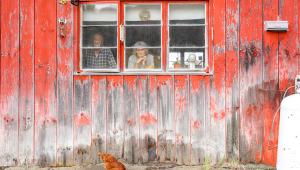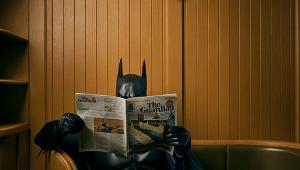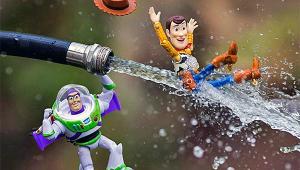Paw Prints: Photographer Jaymi Heimbuch Creates Pet Portraits with Loving Care
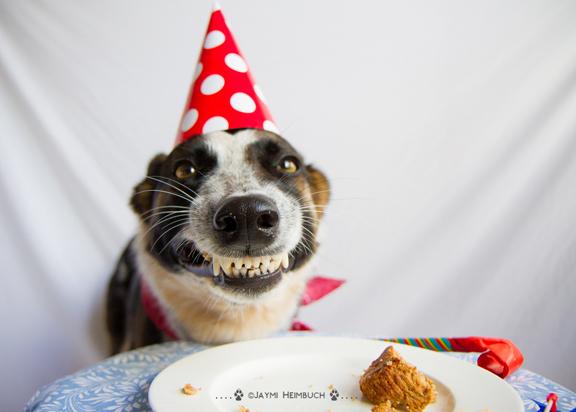
Photographer and writer, Jaymi Heimbuch has a profound interest in wildlife and nature. Her goal is to create images that trigger an emotional connection with viewers, and which spur us all to be stewards of nature. Through her work, Heimbuch hopes to spark wonder, respect and appreciation for animals.
Heimbuch's photography has been published in Bay Nature magazine, Cesar's Way magazine, Mother Nature Network and TreeHugger. One of her images was even turned into a stamp by the United Nations Postal Administration to celebrate the International Day of Happiness.
Her environmental, wildlife and pet writing has been published in a variety of print and online publications, including BBC Wildlife magazine, Huffington Post, and Beautiful Beasties. She is the author of the award-winning book The Ethiopian Wolf: Hope at the Edge of Extinction.
Heimbuch is the Co-Chair of the Environmental Committee of the North American Nature Photography Association (NANPA), and is an Affiliate with the International League of Conservation Photographers (iLCP). She is also a member of HeARTs Speak, and volunteers as a photographer with local animal rescues.
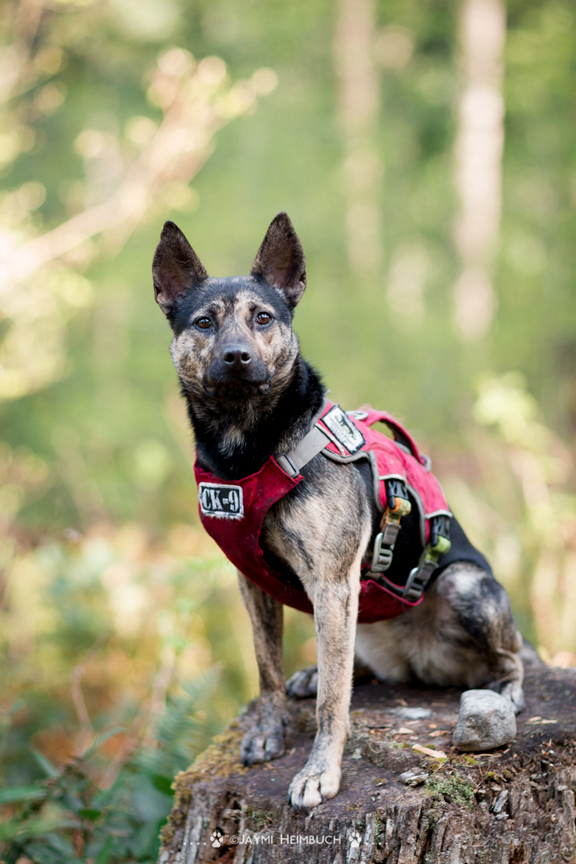
Shutterbug: Could you give us some background on your photography career?
Heimbuch: I have had an interest in photography since high school and have always had a camera on me when out and about, but it wasn’t until my late 20s when I picked up a camera and began learning photography in earnest. Around 2011, I found my passion in animal photography, specifically wildlife conservation photography. I am a senior writer and photographer with Mother Nature Network and am incredibly lucky that my editors support sending me out into the field to photograph animal stories whenever possible.
I have a special affinity for canid species, which of course includes our four-legged best friends. So when not in the field, I am photographing dogs for family pet portraits and for local rescues. For the last few years I have been a member of HeARTs Speak (http://heartsspeak.org/), a non-profit that connects photographers and artists with animal rescues. It is amazing what the power of a quality portrait has in connecting dogs with potential forever families. In fact, one of my images of Macy (a rescued pit bull) was turned into a stamp by the United Nations Postal Administration to celebrate the International Day of Happiness. I also spend a lot of time photographing my own dog and muse—Niner.
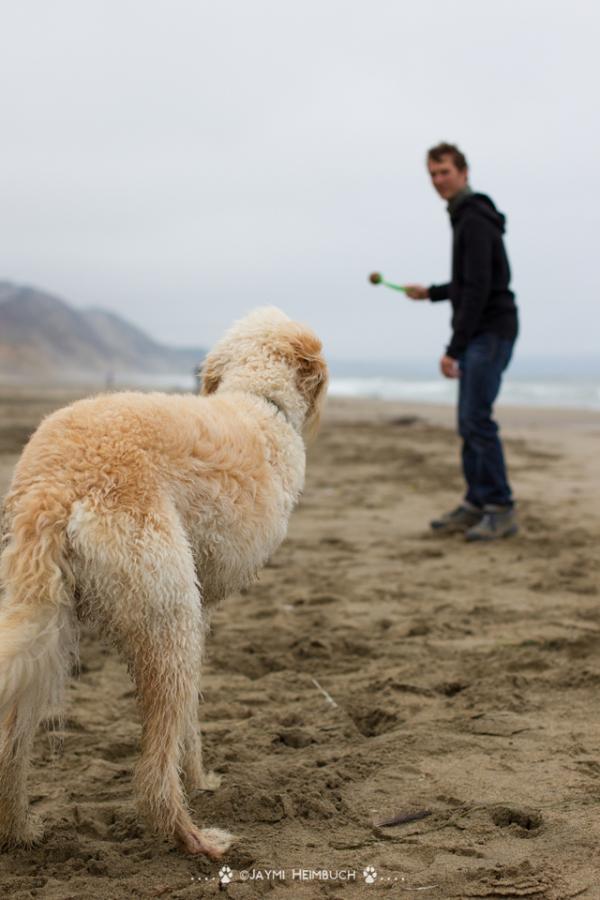
Shutterbug: Why did you decide to create pet portraits and is it easy working with dogs?
Heimbuch: It was really my volunteer work that led me to freelance pet photography. When I started volunteering with local rescues to photograph shelter dogs, I mostly just wanted to do something useful for others with my photography while not in the field photographing wildlife. But in the process, I discovered how fulfilling it is to meet and connect with a dog, and to capture their personality in a portrait. This may sound obvious but dogs have so much nuance to their body language, so much individuality in their personalities, to a degree I think we often underestimate. I found it a fulfilling challenge to try to capture the individual as well as the connection between humans and dog, and to do so in a way that is comfortable and enjoyable for the dogs.
Additionally, 2011 was the year I adopted my dog, Niner, from a local rescue. He is a border collie-cattle dog mix who is incredibly smart and active. I became fascinated by dog cognition and behavior. Canids are my favorite species anyway, so studying dog behavior, body language, and how their senses (and minds) work was a natural extension of an area of study I was already very interested in. I became wrapped up in learning all I could about training and understanding my own complicated companion, and of course when I am not traveling around photographing wildlife, he is my willing subject. I photographed him constantly starting the day I adopted him and through that really started to zero in on my style and approach to working with dogs.
Is it easy to work with dogs? Sometimes yes and sometimes no, depending on the dog. The more I worked with my own dog, the more I enjoyed and found it easier to work with the adoptable dogs at local shelters who need portraits for their adoption profiles. Each dog has his or her own quirks and it is important to learn as much as I can about dogs so I can quickly understand how my subject views the world and adjust my behavior to their needs. When I can come into a portrait session on the dog’s terms, working with that dog is a much easier and more enjoyable experience for everyone involved. It isn’t always easy, but it is always, always rewarding.
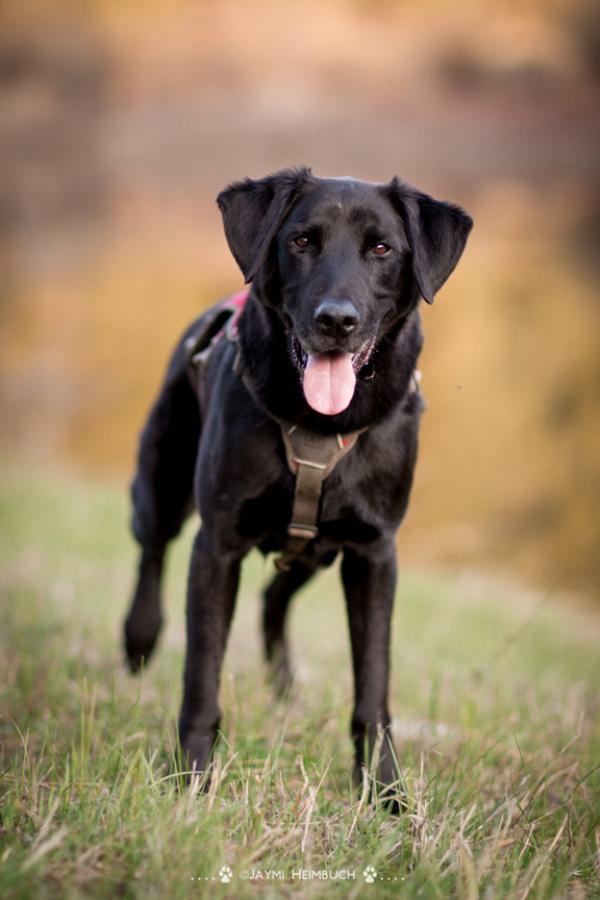
Shutterbug: What does it take to capture the perfect shot and how do you pick the ideal location for each shoot?
Heimbuch: Capturing the perfect portrait is all about coming into the shoot with the dog’s comfort as your main priority. When the dog is comfortable, the shoot is going to go well and I’m going to be able to really capture his or her personality. An uncomfortable dog will have awkward-looking portraits at best and at worst, become reactive or defensive. That’s never a good thing.
When I meet foster dogs for the first time, for example, I ignore them and make sure they are comfortable with me before I engage with them. Then I take a few clicks with the camera near them to judge how they react to the noise of the shutter. It can frighten some dogs, so it is important not to just dive right in but to make sure they understand the camera isn’t something scary, but something fun. It is at this point I can start to see how the dog will be during our shoot—quiet, shy, reserved, exuberant, playful, disinterested, and so on—and I figure out how I’m going to photograph them to capture the best of their personality. When I take the time to do this, the chance of success in making portraits that reflect the real personality of the dog skyrockets.
As far as choosing the location for a shoot, I have a handful of favorite spots in the San Francisco area (where I’m based) and I let the personality and ability of the dog I’m photographing decide which location and what time of day is most appropriate. Before a shoot, I talk to the owner or foster guardian and find out a little about the dog’s personality. I want to know things like if the dog is fearful or shy, are they reactive to other dogs or people, are they excitable, do they have any training in things like sit, stay or recall, do they have any physical limitations, and so on. Then I suggest a location. For example, if the dog is fearful or reactive, I have a favorite little corner of a local park that is wonderfully scenic yet isolated so we won’t run into other dogs or people. That way the owner and dog alike can be relaxed and comfortable during our shoot.
For successful shoots, there is nothing more important than studying dog behavior, body language, and cognition and putting what I learn into practice at the start of each session.
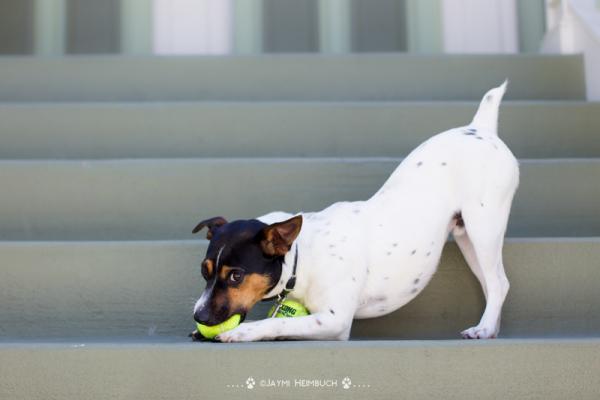
Shutterbug: How do you capture the images? What gear do you use and do you enhance the shots with Photoshop?
Heimbuch: I usually have two cameras and lenses with me: a 50mm f/1.4 on my Canon 1D Mark IV and a 17-55mm f/2.8 on my Canon 7D. This is my go-to kit, and it allows me some diversity in the kind of portraits I get. I also like to bring along a 70-200mm, especially if a dog is fearful, since it allows me to capture them from a distance so they relax a little more. It is also great for really active dogs, since we can have a game of fetch or run around and I can track them even as they zoom around here and there chasing a ball or Frisbee. Though I like to have all of these with me, I often end up using just my 50mm lens. It really is a perfect lens for this kind of photography. When I photograph my own dog, it is almost exclusively with the 50mm.
For processing, I keep things very simple. I use Lightroom for adjustments and have a couple presets I have created for quick color corrections, heightening the Vibrance, deepening the blacks and other small adjustments. I also have created a preset for black and white processing. I try to do very little to an image and alter it as little as possible, just cloning out eye goobers, drool, and other inevitable imperfections to the portrait. Sometimes I will clone out leashes, especially if the owner or foster wants off-leash portraits but it isn’t safe for the dog to be off-leash during the shoot. Overall, I try to get the shot in camera and just do touch-ups in post processing.
The exception to this is when I capture an image using the Brenizer method. For this technique, you blend a series of images together in Photoshop to create an exceptionally shallow depth-of-field. This is a lot of fun to do with dogs that have a solid “stay” command since you need your subject to stay in one place. I wrote a blog post on how to use it, and it’s pretty much the only time I use Photoshop in post-processing.
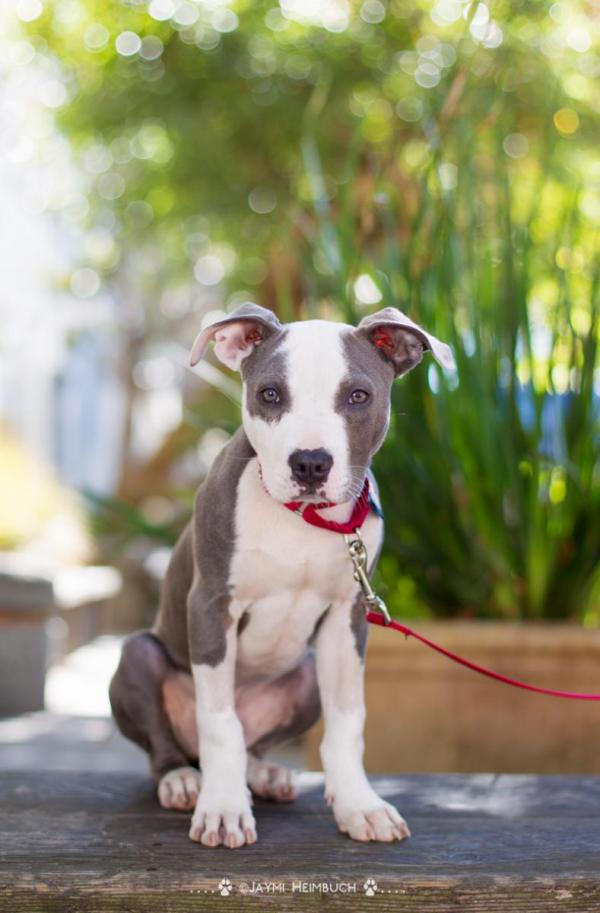
Shutterbug: All of the dogs are relaxed and happy. How do you get them to look at the camera and stay still long enough to capture the image?
Heimbuch: Making sure the dogs are happy is the primary goal of the shoot. It should be fun for everyone, especially the dog. And it is only when the dog is comfortable that their true personality can shine through and be captured.
As for looking at the camera, there are a ton of strategies. You need to have a bunch of tools in your tool kit because different strategies will work on different dogs. Some dogs are curious about me and have no problem looking at the camera, but many have zero interest in looking at me (or the camera), or are intimidated by a big black box covering up my face. When you look at it from a dog’s perspective, it can be really weird to have a human’s face disappear and become a giant pupil. So it can be tricky getting them to look. However, there’s a strategy for every situation.
Sometimes making unique sounds will work. I make popping or mewing noises with my mouth, or use a squeaker. The dog may also have a trigger word that the owner will let you in on, like “dinner” or “walk” or “do you wanna” and those can be your perfect tool.
Another tool is to have a ball in my hand, get their attention on it, and bring it quickly to my camera. However, some dogs may get overly excited at the sight of a ball and just come running toward me. So I have to be ready to judge what the dog is like, what works best with them, and then zero in on that type of tool, whether it is sound, treats, toys, the owner standing behind me, or even just simply waiting until they decide to glance my way and being quick with the shutter button.
Some dogs don’t have a solid sit or stay command, and if that’s the case, you simply have to be ready to capture them how they are: constantly in movement! Making them stay still might not be a priority if that’s not their personality anyway. In fact, one foster dog I photographed had some interest from applicants but wasn’t being adopted because of his energy level. I photographed him running around in the park in all his joyful glory, and he immediately had an application come in and was adopted by a family who was the perfect fit for him. So staying still isn’t always the goal. Being practiced in action photography and tracking a subject has come in handy often in my pet photography.
Ultimately, getting that perfect portrait is simply lots of patience, waiting for the right moment, learning the dog’s personality and predicting their behavior.
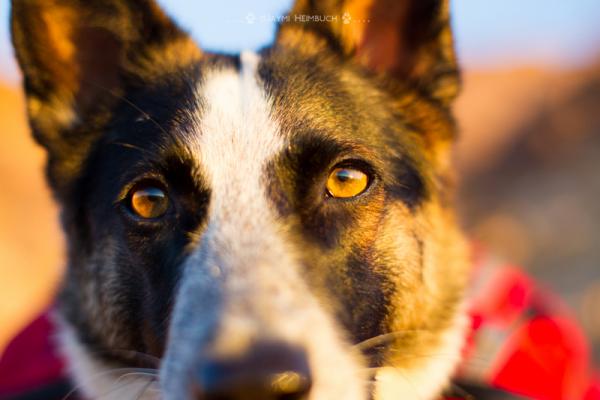
Shutterbug: What advice would you give others who want to create beautiful pet portraits?
Heimbuch: I think the most important things are to know your camera and know your subject. Knowing your camera so well that you don’t have to move it from your eye to change settings or focus points will help to ensure you get a great photograph in camera, and not miss a perfect photographable moment because you were fumbling with your exposure or switching Tracking modes. Because your subject is an animal that moves around a lot and may or may not have the training to sit in one spot and focus on you or change posture or position on command, you need to be ready to shoot on the fly as moments happen.
Like learning your camera, learning dog behavior and cognition is something that takes study and practice, but once learned will make working with dogs so much easier for everyone involved. You’ll be better able to judge how a dog is feeling during the shoot, recognize a dog’s limitations or triggers, know how to make a dog comfortable and happy, and catch on quickly to his or her personality in order to predict movements and actions that create beautiful portraits of the dog as a unique individual.
One last thing: Calm energy. This is essential. It is a common mistake for photographers learning pet photography to come into the shoot with excited, upbeat energy thinking it’ll make the dog happy and like them. All this does is get a dog riled up. Happy-go-lucky dogs will become overly exuberant and excited, while nervous dogs will become even more tense and possibly defensive. When you are calm, the dog will be calm, and you will come away from the session with the positive experience and great shots you want.
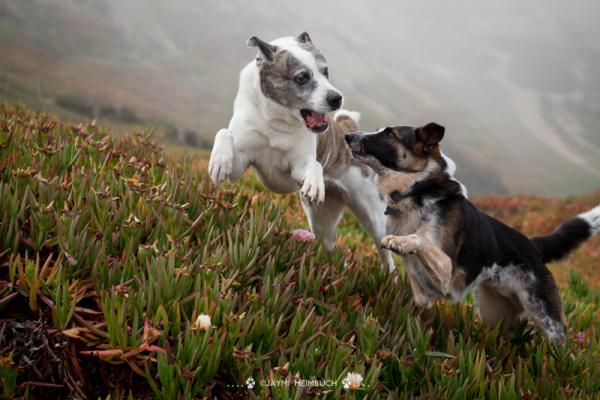
Shutterbug: What other projects you working on these days?
Heimbuch: I always have half a dozen or more projects going, but I have two main projects I’m working on that I’m really excited about.
The first is a volunteer project for Conservation Canines. This is a nonprofit out of University of Washington that rescues shelter dogs and trains them to become scat detection dogs. These dogs are typically the “juvenile delinquents of the dog world,” as the program director put it to me, because they have incredible amounts of energy and an insane ball drive. This makes them terrible pets, and the reason they usually end up in shelters and often on death row. But these same traits make them absolutely perfect as working dogs. The job provides them with an outlet for all that physical and mental energy, and they just thrive with this program. Meanwhile, they’re helping biologists and conservationists as an invaluable tool for data collection, and because of their assistance, researchers are able to better understand species and ecosystems around the globe. Conservation Canines combines the two things I’m most passionate about: rescue dogs and wildlife conservation. So I dove in head first and volunteered to create a 2016 calendar that will be sold for fundraising. Every last penny of the proceeds is going straight to the program. We’re in the design phase now and folks can sign up for the email list to be notified as soon as the calendars go on sale. Since the program is run entirely on donations and grants, we’re hoping that this project can help generate some much-needed funding.
The second project I’m working on is a photojournalism project focused on the cousins of our domestic dogs: urban coyotes. The Natural History of the Urban Coyote is a team effort by myself and two other amazing photojournalists, Morgan Heim and Karine Aigner. We’re bringing together the most recent science about coyotes from top researchers across the continent and combining it with unique, intimate, and beautiful photography that reveals everything there is to know about urban coyotes. We’re hoping the project can make a difference in how people understand and thus coexist with these cunning canids that are now our permanent urban and suburban neighbors. Like I said, I have a special affinity for canid species, wild and domestic!
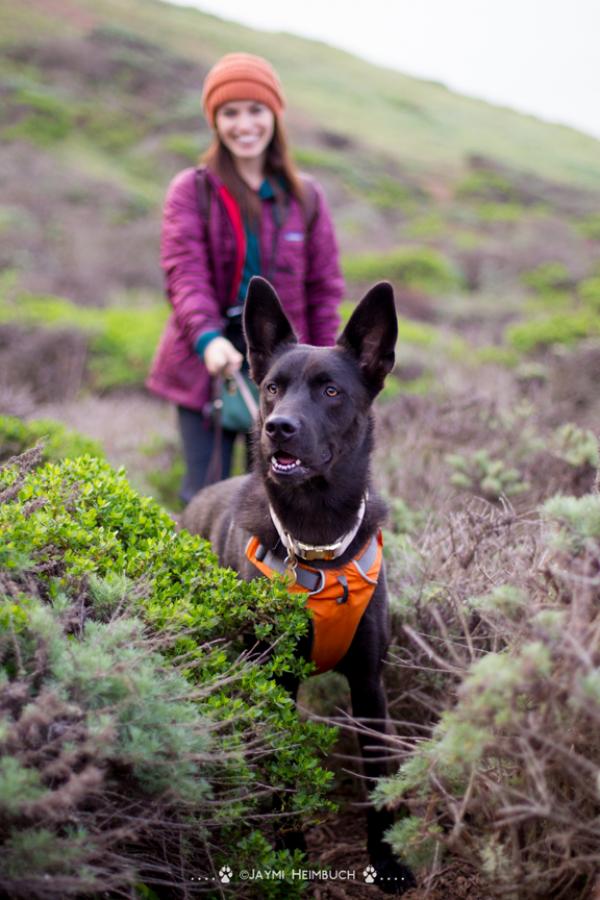
(Photos ©Jaymi Heimbuch)
More info on Jaymi Heimbuch here.




